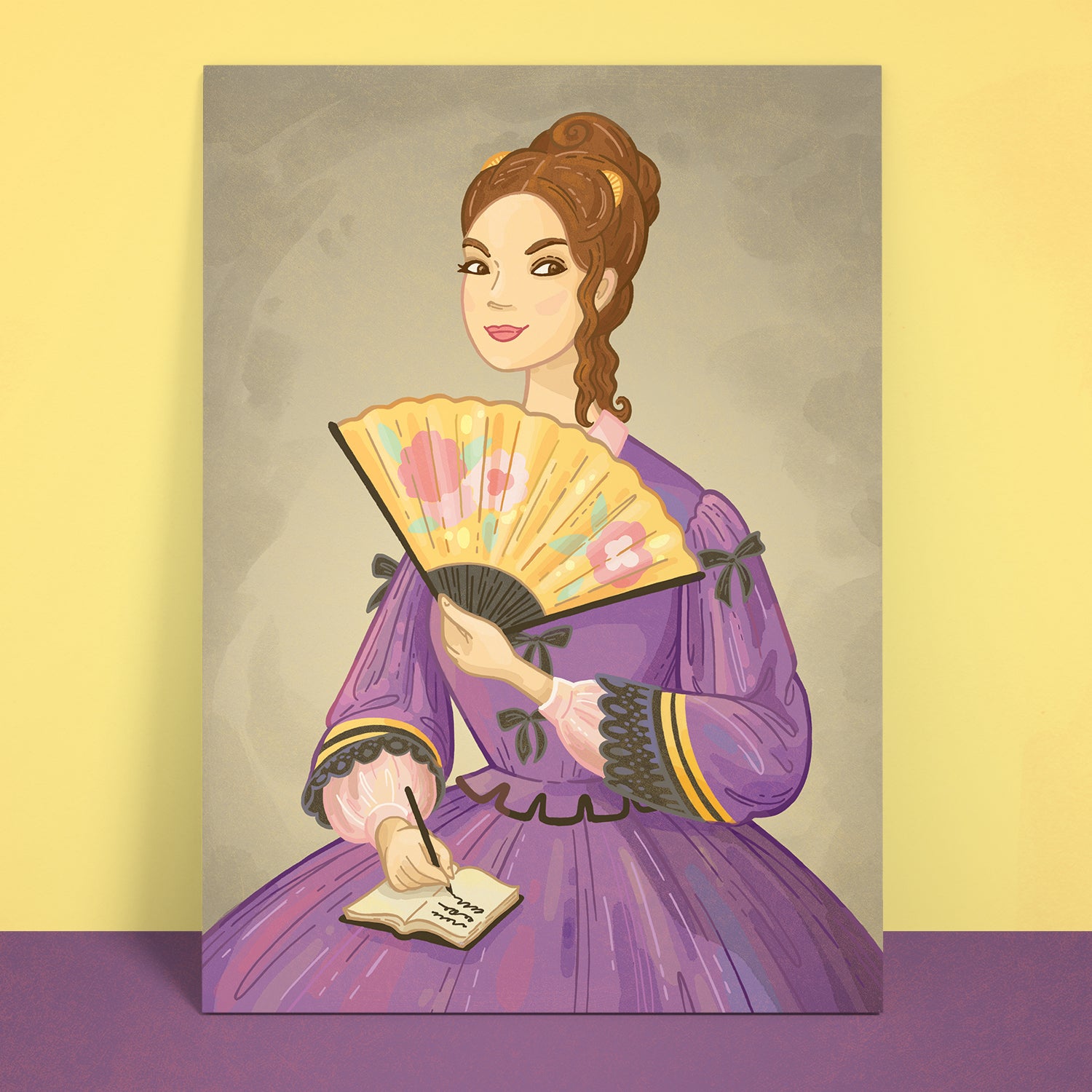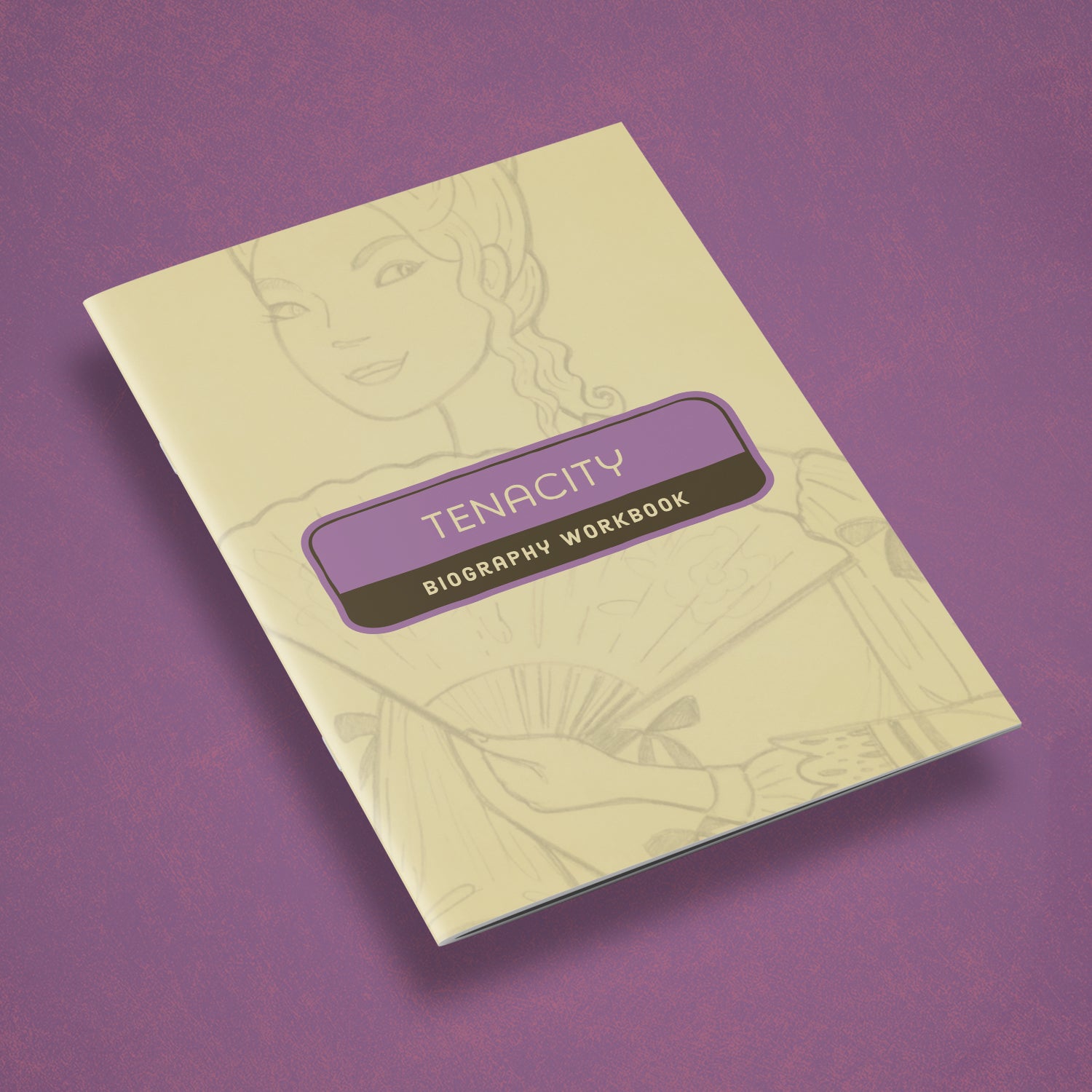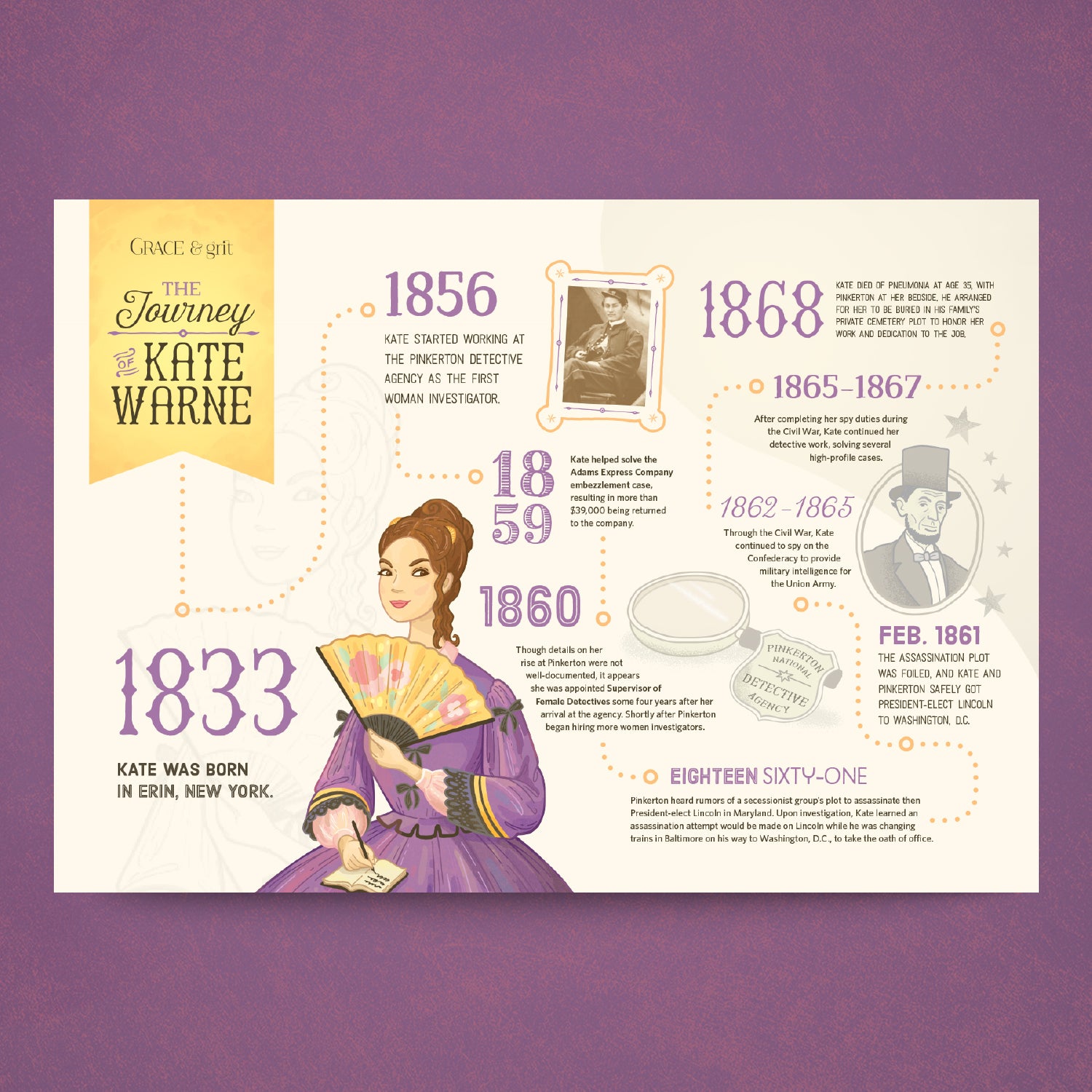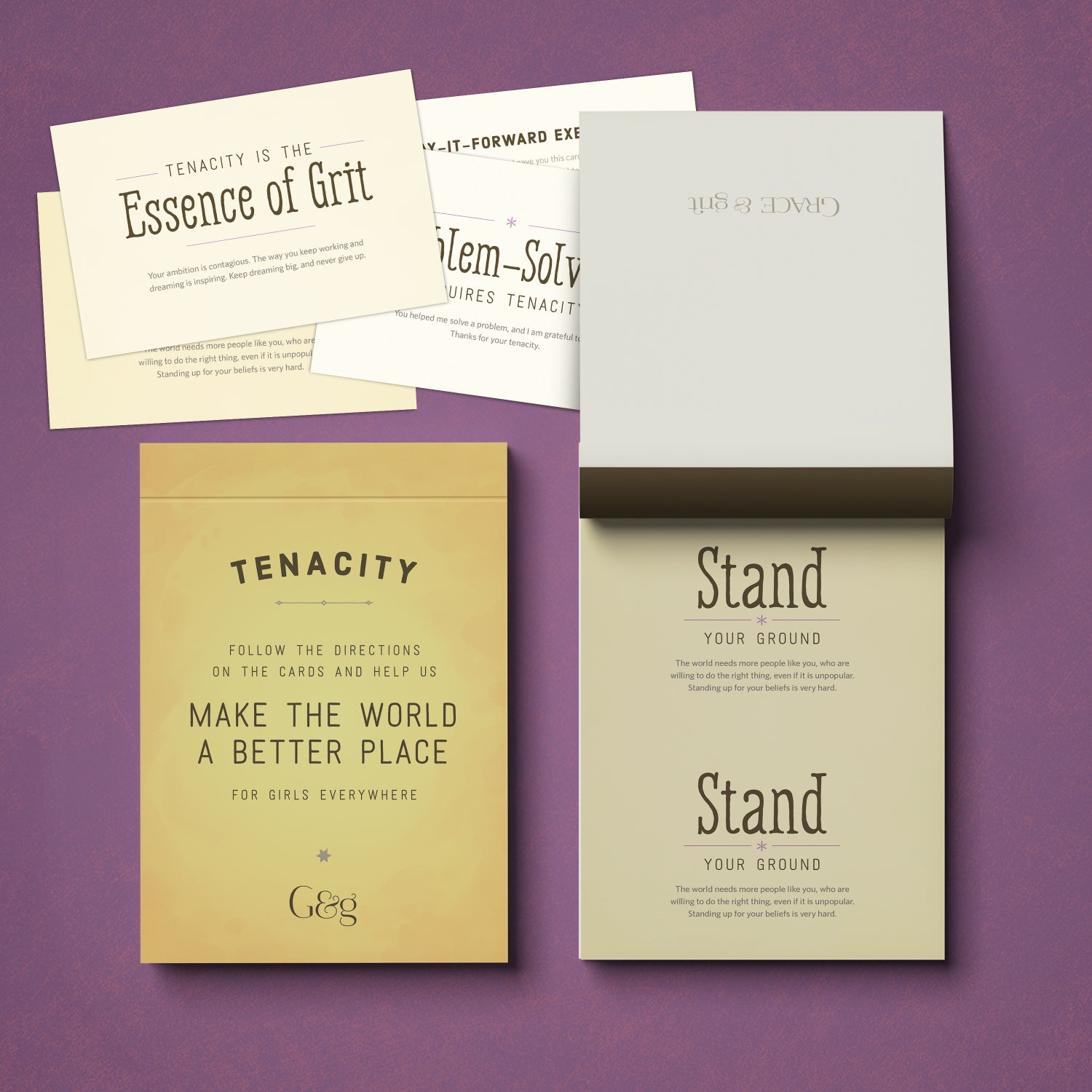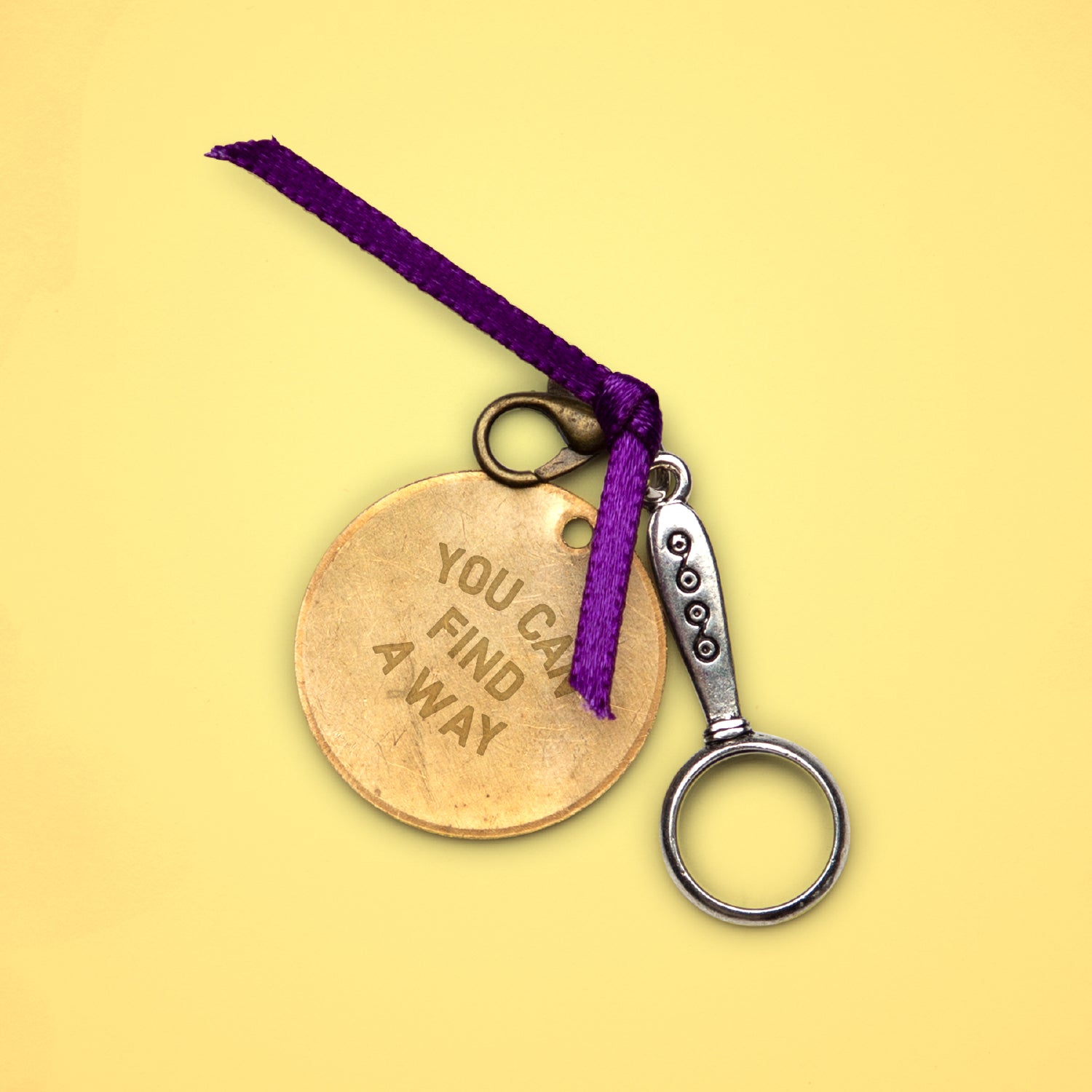Tenacity is the quality or fact of being very determined. Being tenacious can be hard sometimes. However, it is an important lesson to learn early on in life. This lesson gives a real-life example of a woman who decided to chase her desires by being tenacious. It helps girls understand the importance of tenacity and how to incorporate the character trait into their lives and relationships.

Section One
Preparatory Reading
INTRODUCTION FROM HEATHER STARK: WHY KATE WARNE?
My father was the first person to introduce Kate Warne to me. He simply told me she was the first woman detective. That was all it took. I needed to find out what type of woman was tenacious enough to step into a role that defied all societal norms. Who would be tenacious enough to command respect, give directions and lead men in a time when women were considered second-class citizens? In an era when women couldn't vote, own property or attend most universities and were told how to dress and whom they would marry, Kate Warne was a woman who would rise above. She stood against the grain in such a brilliant manner that she saved a president and changed minds about women's roles during the 1800s.
Kate saw an ad in the newspaper for a job as a detective. She went to the office and told Mr. Pinkerton, the head of the detective agency, that she wanted that job. He told her she could work in his agency as a secretary, but not as a detective. Instead of accepting the secretarial position or leaving in defeat, Kate found her grit, stood her ground and made a case that she should indeed become the first woman detective.
She got the job.
Kate did not take “no” for an answer. In fact, I think every time she got a “no,” she smiled at the opportunity to turn it into a “yes.” This is why I love Kate. I like to think that Kate was the type of woman who welcomed that negative answer because she liked a good challenge.
But this isn’t the only reason to love Detective Warne. Kate also comes across as a versatile woman—so comfortable with who she was that she could dress as a Southern belle to spy on the Confederacy or as a poor immigrant in efforts to save a president-elect’s life. By all accounts, she was also very independent, as she seemed comfortable traveling to different parts of the country and deciding on her own how best to spy on others for the information she sought. She didn’t seem to require much training to become a detective, yet before long was training others to do the job. For a girl to be comfortable and independent in her own skin is glorious. When girls can be comfortable and independent, they pursue social lives and set harder goals for themselves. They willingly get out of their comfort zones and try new things.
Kate was precise in what she wanted and determined to pursue it. While not much is written about her outside of her time as a detective, the information available is enough to use her legacy to show girls that life is full of “nos” and limitations—but they do not have to accept these or retreat in defeat. There is great adventure in learning to be comfortable with oneself and in achieving such independence that one anticipates the challenge of chasing that “no” into a “yes.”
THE JOURNEY OF KATE WARNE’S LIFE
Few facts are known about Kate Warne’s life before she went to work for Allan Pinkerton. Still, those few years that historians were able to track her work are filled with enough adventure to fill several timelines! Following is a short summary of her sleuthing.
1833
Kate was born in Erin, New York.
1856
Kate started working at the Pinkerton Detective Agency as the first woman investigator.
1859
Kate helped to solve the Adams Express Company embezzlement case, resulting in more than $39,000 being returned to the company.
1860
Though details on her rise at Pinkerton’s agency were not well-documented, it appears she was appointed Supervisor of Female Detectives some four years after her arrival at the agency. Shortly after, Pinkerton began hiring more women investigators.
1861
Pinkerton heard rumors of a secessionist group’s plot to assassinate then-President-Elect Lincoln in Maryland. Upon investigation, Kate learned an assassination attempt would be made on Lincoln while he was changing trains in Baltimore on his way to Washington, D.C., to take the oath of office.
February 1861
The assassination plot was foiled, and Kate and Pinkerton safely got President-Elect Lincoln to Washington, D.C.
1862-1865
Over the course of the Civil War, Kate continued to spy on the Confederacy to provide military intelligence for the Union Army.
1865-1867
After completing her spy duties during the Civil War, Kate continued her
detective work, solving several high-profile cases.
1868
Kate died of pneumonia at age 35, with Pinkerton at her bedside. He arranged for her to be buried in his family’s private cemetery plot to honor her work and dedication to the job.
Kate’s tenacity led to Pinkerton changing his views about what women could and could not do—and he ended up hiring more women to work as detectives, even though the police force would not follow suit until 1903. By refusing to take “no” as a viable answer to her question that fateful day in 1856, Kate unwittingly propelled the women’s movement forward and changed the course of history.
CHARACTER TRAIT: TENACITY
Tenacity pairs so well with grit, especially when one is chasing a “no” with the intent to turn it into a “yes.”
Today’s girls looking for their “yeses” should know that grit is the foundation for tenacity. Girls should not fear the word “no,” and they should consider tenacity a valuable ally in their efforts to conquer the “nos” of the world.
Life is full of “nos,” and some are beneficial in keeping people safe: no driving while using your cell phone, no underage drinking, no breaking curfew, no running in the halls. But, when a negative reply is coughed up for no good reason, girls must be tenacious, holding on to what they know to be true and working to change that “no” to a “yes.”
Think about the tenacious women in history who turned “nos” into “yeses.” For one, there’s Susan B. Anthony and her tireless efforts in the women’s suffrage movement. Gloria Steinem became a spokeswoman for the women’s movement and pushed to bring more women into the workplace. Marie Curie was not allowed to attend college in her native Poland, but she attended secret “floating universities” there before eventually completing her education in France—and she received a Nobel Prize not once, but twice. These all are instances where “nos” and criticism were handed out readily, but these women didn’t hide from it. Instead, they recognized that the “no” wasn’t about them; it was about the person giving the negative response. Tenacity helps girls realize that a “no” isn’t an insult to their character, but an opportunity to broaden somebody's perspective.
A “no” can be a girl’s greatest ally. It can keep her safe, give her space, offer relief from stress or expectations and it also can also provide her with an opportunity to believe so strongly in herself that she becomes tenacious in her approach to defeating it. It’s at those times when a “no” absolutely needs to be turned into a “yes” that tenacity steps in with all its grit.
Tenacity opens the door for girls to understand that there is always a way to pursue a goal, always something to dream about and always a “yes” to be found to the question whose time has come.
LESSON CONTENTS
Below are descriptions of each item we offer as part of the Tenacity Theme. Depending on your purchase, some of these may not be applicable.
- Illustrated Portrait
- Our portrait gives life to each of our sets. Kate's illustration depicts a woman with an active mind and a talent for setting the scene to provide the answers she needs. Perhaps Kate is at a party, gathering information for her latest case. Those notes she is writing will be tucked away as she casually excuses herself from the party to foil the plot.
- Activity Booklet
- The Activity Booklet highlights the themes in Kate Warne's life. It gives an overview of her journey into tenacity and the legacy she left behind. The booklet includes six thought-provoking activities that guide the readers to apply the lessons of Kate's life to their own. Girls will understand what tenacity looks, sounds and feels like. More importantly, they will understand how to be their own best advocate.
- Biography
- While the Activity Booklet highlights Kate's story, the Biography gives a more in-depth telling of her life. The reader will learn how Kate was tenacious in pursuit of her job as a Pinkerton. It tells how she changed stereotypes, rose to the head of her profession and saved the life of one U.S. president. The Biography contains personal stories and quotes that reinforce Kate's tenacious spirit.
- Biography Workbook
- The Biography Workbook allows the reader to dive into the lessons Kate Warne's legacy teaches and apply them to their life. We took the same thought-provoking activities from the Activity Booklet and made them into a companion guide for the Biography. After completing the activities, girls will understand what tenacity looks, sounds and feels like. More importantly, they will understand how to pursue their dreams.
- Timeline Poster
- The Timeline Poster is a quick introduction to the life of Kate Warne. One look at it, and the reader can easily spot the milestones in Kate's life, the events that led to her negotiating her job as a detective, solving crimes and protecting a U.S. president. From birth to death, girls can trace Kate's path and understand how her accomplishments changed the course of history.
- Play-It-Forward Cards
- Using the Play-It-Forward Cards allows your girls to generalize the lessons they have learned about Kate Warne and her tenacity. By following the directions on the cards, they will acknowledge those instances where they see Kate's spirit in themselves and others in their community. The Play-It-Forward Cards encourage girls to support one another by encouraging and recognizing tenacity in others.
- Accessory
- The Accessory is a gift that reminds girls of Kate's tenacity. Her accessory is a small purse called a reticule during the 1800s. It has a "spy" quality, like a secret bag she could easily slip a note into without anyone noticing. This small purse hooks around a belt loop and is easily hidden by a shirt. It is designed to be sturdy and versatile—much like Kate.
- Charm
- The charm is a reminder of Kate's tenacity and problem-solving skills. The G&G Charm is a small, functional magnifying glass, symbolizing her work as a lead detective. It is paired with a disk that reads "You Can Find a Way." Reminding girls that no isn't the end of a story and that tenacity will help them achieve their goals. Everything is figure-outable.

